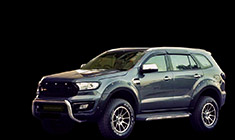News
UP might soon get biomethane buses from Scania
Uttar Pradesh State Road Transport Corporation (UPSRTC) is considering the addition of a fleet of buses that run on biomethane gas, for intra-city transport services. The most unique quality of these buses is that these are fueled by human sewage and household waste.
So how does it work? Human sewage and food waste is treated to produce methane-rich gas. Oxygen-starved bacteria break down biodegradable material to produce this gas. This gas is compressed and stored in tanks. To fuel the bus, carbon dioxide is removed from this biogas and propane is added. Impurities are removed too, to ensure that the emissions are odorless. The body waste of 100 humans is said to be sufficient for these buses to cover a distance of 200 kms.
The buses will serve 75 districts and discussions with Swedish bus maker, Scania are currently going on. Scania is said to manage the entire operations which includes running and maintenance of these buses, routes and timings as well as other costs of fuel and driver compensation. UPSRTC would pay the company a pre-determined fee per km (between Rs. 60 and Rs. 75).
Earlier this year, in March, UK's first 'poo bus' went into service. To know more about the bus, click here.
*Image for representation purpose only
Source: The Economic Times















_1_0.jpg)



